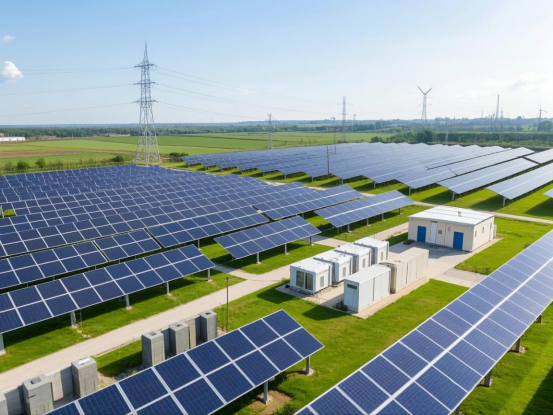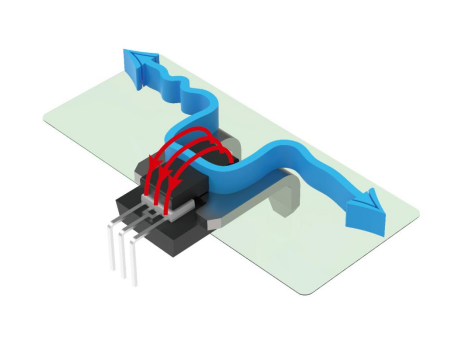
With the promotion of the goal of "double carbon" and the deepening of the reform of the power market, the integrated and coordinated development of "source and network charge and storage" (power generation, grid, electricity load and energy storage) has become a hot topic in the energy circle。To put it simply, new energy sources such as photovoltaic and wind power, together with energy storage devices and dispatchable power loads, will interact more intelligently with the large grid to form an efficient and flexible energy system.As a key link, intelligent microgrid is playing an increasingly important role.

Micro network coordination "persistent" : accurate perception is the key
For example, in a micro grid, photovoltaic panels power generation is not stable, changeability to balance energy storage battery needs rapid charge and discharge, the user's electricity consumption also changes in real-time. Take the three coordinates (pv), energy storage, load, let the power balance between supply and demand, system and stable operation, challenge.If the information is not accurately grasped and the response is half a beat slow, it may lead to voltage fluctuations, unstable frequency, and even affect power quality and equipment safety.
The introduction of the "source-grid-load-storage" coordinated policy precisely requires us to enhance our capacity for multi-energy complementarity and flexible dispatching. And the foundation of all this cannot do without precise and rapid "perception" - that is, high-performance sensors.
The role of CHIPSENSE: Equipping microgrids with "sharp eyes"
At this point, professional sensors come in handy. The current sensor of CHIPSENSE Electronics is like equipping the microgrid system with "sharp eyes", monitoring the subtle changes in current in real time and providing key data for intelligent control.
Key player: AN1V series current sensor
In microgrid systems, the current in the output of photovoltaic inverters, the charging and discharging of energy storage systems, and the consumption of loads can be in the form of direct current, alternating current, or even pulses, and it changes very rapidly.
The AN1V series is based on the Hall principle and adopts ASIC technology, which can accurately measure these complex current signals. One of its key capabilities is its fast response (with a typical tracking time of only 2.5 microseconds) and wide bandwidth (with a typical value of 250kHz). This means that when the photovoltaic output changes suddenly or the load starts up suddenly, AN1V can quickly detect the current changes, allowing the control system to promptly adjust the charging and discharging of energy storage or regulate the power to maintain the dynamic balance of the microgrid.
Furthermore, in complex power electronic conversions, unwanted DC components may be generated, affecting system stability and equipment lifespan. The AN1V can measure currents including direct current, providing an accurate input basis for the control algorithm to suppress the direct current component, thereby enhancing the overall stability and power quality of the system.

2. Safety Sentinel: FR2V H00 Series Leakage Current Sensor
The safe and stable operation of microgrids is equally crucial, especially when it comes to the photovoltaic and energy storage DC links. A tiny direct current leakage current or residual current may indicate insulation failure or potential risk.
The FR2V H00 series adopts fluxgate technology and specializes in the precise measurement of tiny direct current leakage currents (capable of measuring currents at the mA level). It features high precision and extremely low zero-point temperature drift, and is capable of reliably detecting abnormal signals that are difficult to detect.
Deploying FR2V sensors in photovoltaic arrays, inverters or energy storage systems is like setting up a sensitive "safety sentinel". Once abnormal leakage current is detected, the system can promptly issue an alarm or take protective measures to prevent the fault from expanding and ensure the safety of personnel and equipment. This is also an indispensable part of enhancing the overall stability of the system.
Conclusion
In the process of building intelligent microgrids and responding to the "source-grid-load-storage" collaborative policy, precise and reliable sensing technology is the foundation. The AN1V series sensors of CHIPSENSE, with their rapid response and broadband characteristics, provide strong support for achieving dynamic and precise coordination among photovoltaic, energy storage and load systems, effectively addressing the challenges of DC component suppression and dynamic response. The FR2V series, with its high-precision leakage current detection capability, ensures the safe and stable operation of microgrids. The combination of the two will jointly contribute to the creation of a smarter, more efficient and secure future energy network.
CHIPSENSE is a national high-tech enterprise that focuses on the research and development, production, and application of high-end current and voltage sensors, as well as forward research on sensor chips and cutting-edge sensor technologies. CHIPSENSE is committed to providing customers with independently developed sensors, as well as diversified customized products and solutions.
“CHIPSENSE, sensing a better world!
www.chipsense.net
4F, Building C, ZHENGLING.Hi-TECH PARK(Core Space) , No. 2 Cuizhu 2nd Street, Xiangzhou District, Zhuhai, Guangdong Province, China
+86-756-8600806